Pirogov's "Crib Dressing": who taught the world to plaster fractures
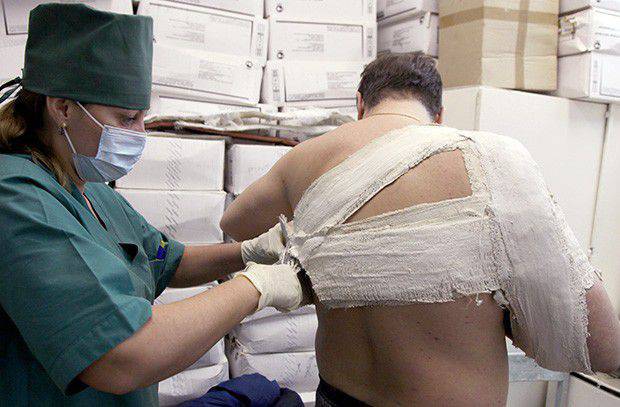
One of the most important inventions of the genius Russian doctor who first used anesthesia on the battlefield and brought nurses into the army
Imagine the usual emergency room - say, somewhere in Moscow. Imagine that you find yourself there not for personal need, that is, not with an injury that distracts you from any extraneous observations, but as a passer-by. But - with the ability to look into any office. And now, passing along the corridor, you notice a door with the inscription "Gypsum". And what about her? Behind her is a classic medical office, the look of which differs only in a low square bath in one of the corners.
Yes, yes, this is the place where a broken arm or leg, after a primary examination by a traumatologist and an x-ray done, will apply a plaster cast. What for? To the bones fused as it should, and not as horrible. And so that the skin could still breathe. And so that the careless movement does not disturb the broken limb. And ... What is there to ask! After all, everyone knows: once something is broken - it is necessary to impose a plaster.
But this "everyone knows" - on the strength of 160 years. Because for the first time, the great Russian doctor, surgeon Nikolai Pirogov applied the plaster cast as a means of treatment in 1852. Before him, no one in the world did this. Well, and after him, it turns out, does anyone, anywhere. But the “pirogovskaya” plaster cast is just that priority that no one in the world disputes. Just because it is impossible to dispute the obvious: the fact that gypsum as a medicine is one of purely Russian inventions.
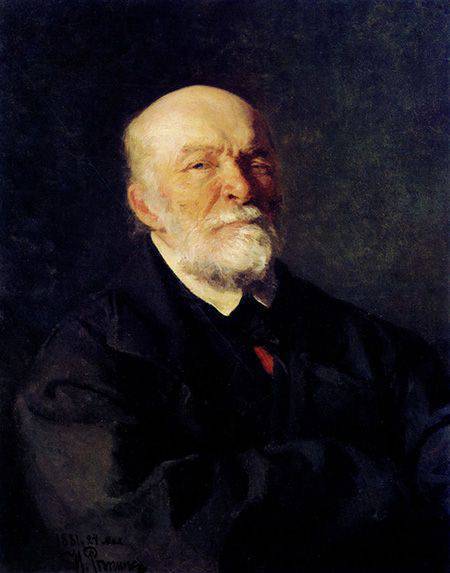
War as an engine of progress
By the beginning of the Crimean War, Russia was in many ways not ready. No, not in the sense that she did not know about the impending attack, like the USSR 1941 in June. In those days, the habit of saying “I go to you” was still in progress, and intelligence with counterintelligence was not yet developed enough to carefully conceal preparations for an attack. The country was not ready in a general economic and social sense. Lacked modern weaponsmodern fleet, railways (and this turned out to be critical!) leading to the theater of operations ...
And there were not enough doctors in the Russian army. By the beginning of the Crimean War, the organization of medical service in the army was in accordance with the manual, written a quarter of a century before. According to his requirements, after the outbreak of hostilities in the army there were more than 2000 doctors, almost 3500 paramedics and 350 paramedics students. In reality, no one was enough: neither the medical staff (tenth part), nor the medical assistants (twentieth part), and there were no students at all.
It would seem, not such a significant shortage. But nevertheless, as military researcher Ivan Bliokh wrote, “at the beginning of the siege of Sevastopol, one doctor accounted for three hundred injured people”. To change this ratio, according to historian Nikolai Hubbeneta, during the Crimean War, more than a thousand doctors were recruited, including foreigners and students who received a diploma but did not complete their studies. And almost 4000 paramedics and their students, half of which were out of action during the fighting.
In such a situation, and taking into account the characteristic, alas, Russian army of the time of rear organized disorder, the number of permanently disabled wounded was to reach at least a quarter. But as the resilience of the defenders of Sevastopol amazed the allies preparing for a quick victory, so the efforts of the medics unexpectedly gave a much better result. The result, which had several explanations, but one name - Pirogov. After all, it was he who introduced immobilizing plaster bandages into the practice of military field surgery.
What did this give the army? First of all, the opportunity to return to the ranks of many of those wounded who, a few years earlier, would have simply lost an arm or leg as a result of amputation. After all, before Pirogov, this process was arranged very simply. If a person with a broken arm or leg with a bullet or a splinter fell on the surgeons' table, amputation was most often waiting for him. Soldiers - by decision of doctors, officers - according to the results of negotiations with doctors. Otherwise, the wounded would still most likely not be returned to service. After all, the unfixed bones have grown together, and the man remained crippled.
From the workshop to the operating room
As Nikolai Pirogov himself wrote, “war is a traumatic epidemic.” And as for any epidemic, for the war there had to be some kind of, figuratively speaking, vaccine. It is partly because not all injuries are exhausted by broken bones — and gypsum has become.
As is often the case with ingenious inventions, Dr. Pirogov came up with the idea of making his own immobilization bandage literally from what lies beneath his feet. Rather, at hand. Since the final decision to use for dressing plaster, wetted with water and fixed with a bandage, came to him in ... the sculptor's workshop.
In 1852, Nikolai Pirogov, as he recalled a decade and a half later, watched the work of sculptor Nikolai Stepanov. “For the first time I saw ... the effect of the gypsum mortar on the canvas,” the doctor wrote. - I guessed that it can be used in surgery, and immediately put bandages and strips of canvas, wetted with this solution, on a complex fracture of the leg. The success was wonderful. The bandage dried out in a few minutes: an oblique fracture with a strong blood leak and skin perforation ... healed without suppuration and without any seizures. I was convinced that this bandage can find immense application in military field practice. ” How, in fact, happened.
But the discovery of Dr. Pirogov was the result not only of accidental illumination. Over the problem of a reliable fixing bandage Nikolai Ivanovich fought not the first year. By the year 1852, behind Pirogov’s back, there was already an experience of using linden splints and starch dressings. The latter was something very similar to a plaster cast. Impregnated with a solution of starch pieces of canvas, layer by layer, were laid on a broken limb - just like in the papier-mâché technique. The process was quite long, the starch did not harden immediately, and the dressing was cumbersome, heavy and non-water resistant. In addition, she missed the air badly, which adversely affected the wound if the fracture was open.
By the same time, ideas with the use of gypsum were already known. For example, in 1843, a thirty-year-old physician Vasily Basov suggested fixing a broken leg or arm with alabaster poured into a large box - “dressing projectile”. Then this box on the blocks was lifted to the ceiling and fastened in this position - almost the same as today, if necessary, plastered limbs are attached. But the weight was, of course, beyond, and the breathability - no.
And in 1851, the Dutch military doctor Antonius Mathijsen put into practice his own method of fixing broken bones with the help of gypsum-rubbed bandages, which were superimposed on the fracture site and were directly moistened with water. He wrote about this innovation in February 1852 of the year in the Belgian medical journal Reportorium. So the idea in the full sense of the word was in the air. But only Pirogov was able to fully appreciate it and find the most convenient way of casting. And not just anywhere, but in war.
Pirogov's “Safety Guide”
Let us return to besieged Sevastopol, during the time of the Crimean War. By now, the famous surgeon Nikolai Pirogov arrived at her on October 24 1854, at the height of the events. It was on this day that the notorious battle of Inkerman took place, which ended with a major setback for the Russian troops. And here the shortcomings of the organization of medical care in the troops showed themselves to the full.
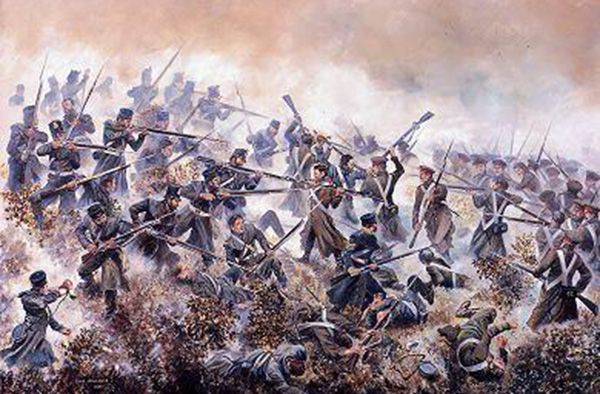
In a letter to his wife Alexandra 24 on November 1854, Pirogov wrote: “Yes, October 24 was not unexpected: it was foreseen, intended and not taken care of. 10 and even 11000 were retired, 6000 too wounded, and nothing was prepared for these wounded; like dogs, threw them on the ground, on the bunk, whole weeks they were not tied up or even fed. The English were rebuked after Alma, that they did nothing in favor of the wounded enemy; October 24 we did not do anything. Arriving in Sevastopol on November 12, therefore 18 days after the case, I found too 2000 injured, crowded together, lying on dirty mattresses, mixed, and whole 10 days almost from morning to evening had to operate on those that had to be done immediately after battles.
It was in this setting that Dr. Pirogov’s talents were fully manifested. Firstly, it is to him that the merit in the introduction to the practice of the sorting system for the wounded belongs: “I was the first to introduce the sorting of the wounded at the Sevastopol dressing stations and thereby destroyed the chaos that prevailed there,” the great surgeon himself wrote. According to Pirogov, every wounded man had to be assigned to one of five types. The first is the hopeless and fatally wounded, who no longer need doctors, but comforters: nurses or priests. The second is seriously and dangerously wounded, requiring urgent assistance. The third - seriously wounded, "also requiring urgent, but more precautionary benefits." The fourth is “the wounded, for whom a direct surgical allowance is necessary only to make possible transportation.” And finally, the fifth - “lightly wounded, or those in which the first allowance is limited to the imposition of a light ligation or the removal of a superficially sitting bullet.”
And secondly, it was here, in Sevastopol, that Nikolai Ivanovich began to use widely the plaster bandage he had just invented. How much importance he attached to this innovation can be judged by a simple fact. It was for him that Pirogov singled out a special type of wounded - demanding "safety benefits."
The extent to which the plaster cast was widely used in Sevastopol and, in general, in the Crimean War, can only be judged by indirect signs. Alas, even meticulously describing everything that happened to him in Crimea, Pirogov did not take care to leave to his descendants accurate information on this subject - mainly evaluative judgments. Shortly before his death, in 1879, Pirogov wrote: “I first put the plaster bandage into military hospital practice in 1852, and in military field in 1854, finally ... I took it and became the necessary accessory of field surgical practice. I will allow myself to think that my introduction of a plaster cast into field surgery mainly contributed to the spread of field savings in field practice. ”
Here it is, the very "savings treatment", it is also a "safety benefit"! It was for him that he was used in Sevastopol, as Nikolai Pirogov called it, "alabaster (plaster) bandage". And the frequency of its use directly depended on how many wounded the doctor tried to protect from amputation - which means how many fighters needed to put plaster on gunshot fractures of the arms and legs. And apparently, they went through the hundreds. “We suddenly had up to six hundred wounded in one night, and we did too seventy amputations over twelve hours. These stories repeat incessantly in different sizes, ”wrote Pirogov to his wife 22 on April 1855. And according to eyewitness accounts, the use of the Pirogov “dummy bandage” made it possible to reduce the number of amputations by several times. It turns out that only on that dreadful day about which the surgeon told his wife, a gypsum was applied to two or three hundred wounded!
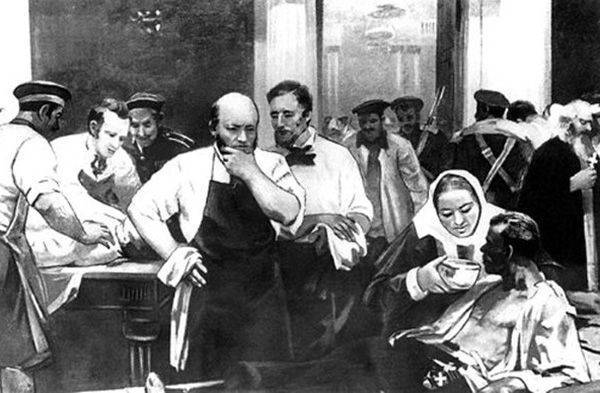
And we must remember that the entire city was under siege, not only the troops, and among those who received the latest help from Pirogov’s assistants, there were many civilians in Sevastopol. Here is what the surgeon himself wrote in a letter to his wife from 7 on April 1855: “The dressing station, in addition to the soldiers, also brings women with torn-off members of children from bombs that fall into the ship suburb - part of the city, where, despite the visible danger, continue to live sailors' wives and children. We are busy both night and day, and at night, as if on purpose, even more than during the day, because all the work, attacks, assaults on lodgements, etc., are made at night [...] ... I sleep and spend the whole day and night at the dressing station - in the Noble Assembly, whose parquet is covered with dried blood bark, hundreds of amputated ones lie in the dance hall, and lint and bandages are placed on choirs and billiards. Ten doctors with me and eight sisters work vigilantly, alternately, day and night, operating and dressing the wounded. Instead of dance music, moans of the wounded are heard in the huge Assembly hall. ”
Gypsum, ether and sisters of mercy
"Hundreds of amputated" - this means thousands of plastered. And plastered ones means saved, because it was the death rate from amputations that was one of the most common causes of the death of Russian soldiers during the Crimean War. So is it any wonder that, where Pirogov was present with his novelty, the death rate was sharply declining?
But the merit of Pirogov is not only in the fact that it was he who was the first in the world to apply a plaster cast in field surgery. He also owns, say, primacy in the use of ether anesthesia in a hospital of the army. And he did it even earlier, in the summer of 1847, during his participation in the Caucasian War. The hospital in which Pirogov operated was located in the rear of the troops besieging Salta aul. It was here, on the orders of Nikolai Ivanovich, that all the necessary equipment for ether anesthesia was delivered, which he tested 14 for the first time in February of the same year.
During the month and a half of the siege of Salta Pirogov, almost 100 operations were performed with ether anesthesia, and a considerable part of them were public. After all, Dr. Pirogov needed not only to operate on the wounded, but also to convince them that anesthesia is a safe and necessary tool for the cause. And this reception had its effect, and in some ways even surpassed the expectations of the doctor. Seeing the comrades who endured surgical manipulations with serene faces, the soldiers believed in Pirogov’s ability so much that several times after that they tried to get him to operate on the comrades who had already died, believing that this doctor could do anything.
All is not everything, but much of Pirogov really could. In Sevastopol, he also widely used ether anesthesia - which means that he did everything so that the wounded did not die on his desk from a painful shock. The exact number of people saved in this way is difficult to calculate, but if Nikolay Ivanovich had over 10 000 operations with anesthesia on his account, at least half of them fell on Sevastopol times.
Gypsum, ether, sorting the wounded ... Is there anything else that Pirogov did the first of his colleagues? There is! He can be credited with introducing into the Russian army an institution like the sisters of mercy. Nikolai Ivanovich was one of the initiators of the creation of the Krestovozdvizhenskaya women's community of sisters of mercy, whose participants played a huge role in saving the wounded near Sevastopol. “Five days ago, the Holy Cross Congregation of the Sisters of Helena Pavlovna, numbering up to thirty, arrived here, began zealously for the cause; if they do this as they do now, they will bring, no doubt, a lot of good, ”Pirogov writes to his wife in a letter from Crimea from 6 December 1854 of the year. - They are alternately day and night in the hospitals, help with the dressing, there are also during operations, hand out tea and wine to the sick and watch the attendants and caretakers and even doctors. The presence of a woman, neatly dressed and assisted, enlivens the pitiful vale of suffering and distress. ”
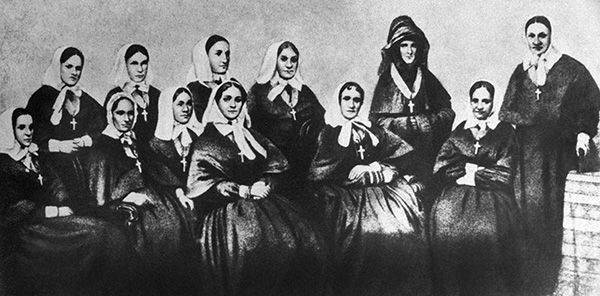
Having received the sisters of mercy as their source, Pirogov rather quickly introduced a division of specialization between them. He divided them into dressing rooms and operating rooms, pharmacies, attendants, transport and hostesses who were responsible for food. Isn't it a familiar division? It turns out that Nikolai Pirogov was the first to introduce him ...
"... Before other nations"
Great people are great because they remain in the memory of grateful descendants not only by their one achievement, but by many. After all, the ability to see new things, put them into shape and put into circulation cannot be exhausted in any one invention or innovation. So Nikolai Ivanovich Pirogov entered the national and world history of medicine with several of his innovations at once. But above all - as the inventor of the plaster cast.
So now, having met a person with a plaster cast in the street or in the courtyard, you should know: this is one of those many inventions that have become famous for Russia. And which we have the right to be proud of. As the inventor himself, Nikolay Pirogov, was proud of him: “The benefits of anesthesia and this dressing in military field practice were investigated by us in practice before other nations.” And it is true.
- Sergey Antonov
- http://rusplt.ru/sdelano-russkimi/nalepnaya-povyazka-pirogova-kto-nauchil-mir-gipsovat-perelomyi-17604.html
Information